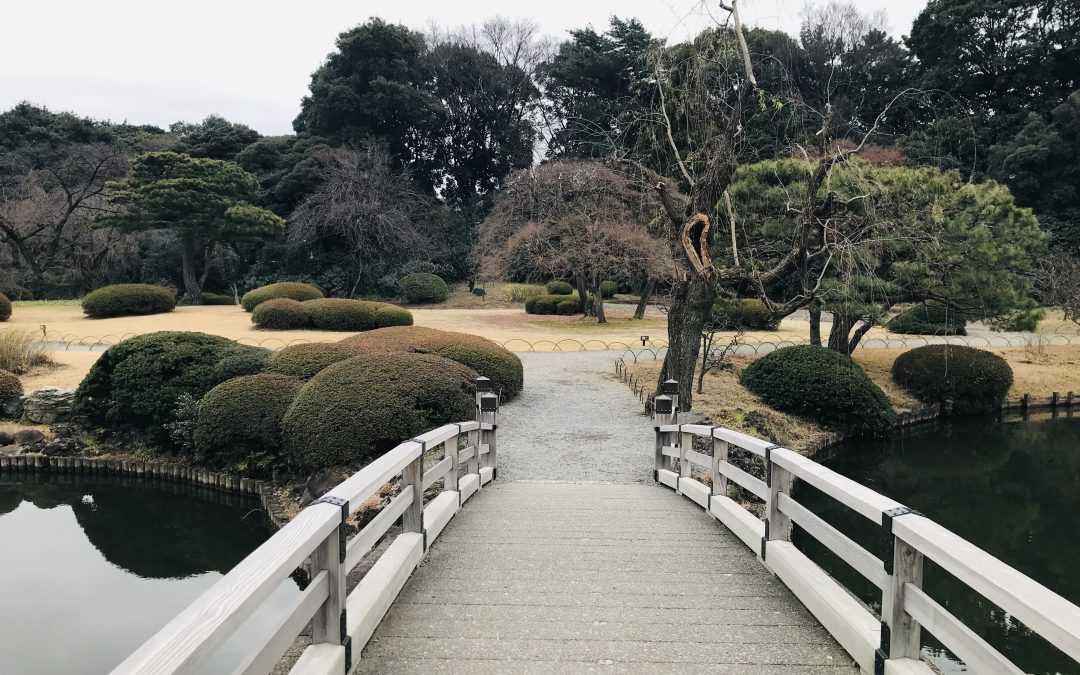Before coming to Japan, I held fairly common preconceptions about Japan’s technology and relationship to nature. I knew tech brand names, heard rumors of the wonders of the train systems, and had seen enough media images of Japan to associate Japan with a reverence to or connection with nature. Since arriving in Japan, I’ve stayed in Tokyo, where I visited Shinjuku Gyoen Park and Ueno Park, visited Kamakura, where I saw the ocean and Mount Fuji, and stayed at ARI, the institute devoted to sustainable, organic farming and training rural community leaders. Each location offered a different expression or experience of nature.

Shinjuku Gyoen
At Shinkjuku Gyoen Park, nature was cultivated and expressed in the specific designs set by the park keepers. I do not have much experience with parks in the United States, but I found myself comparing it to Como Park located in my home state—Minnesota. Like Como, Shinjuku Gyoen had many walking paths, special garden types like the traditional Japanese garden and flower fountains, and a greenhouse. Funnily enough, Como Park’s greenhouse had a pond containing Japanese koi fish absent in Shinjuku Gyoen’s greenhouse—quite possibly because you could find them in nearby canals anyway. I wandered through the greenhouse for some time, examining the plants housed there due to their status as native or endangered plants. The path wound over and under itself—at one point passing under a waterfall. Here, in the greenhouse, and throughout most of the rest of the park too, the gardeners expressed nature by shaping it into calm, contemplative environment.

Kamakura Beach
The second park I visited in Tokyo was Ueno Park. The keepers here had shaped a very different environment: The paths were wide, the people loud, one acrobat performed by tossing and catching a disk on a string in increasingly dramatic ways. This park was designed to entertain, and I quickly found myself overwhelmed by the bustle and the noise.
Kamakura again offers a different story. This coastal city, only about an hour by train from Tokyo station, has a small town feel formed by the little pedestrian streets lined with cute shops that makes up the city center right outside Kamakura station; however, Kamakura sprawls out over a vast amount of land. The piece of nature that drew me here was the ocean. I walked to the beach several times during my twenty four hour stay, and the beach was a beautiful mixture of sand, shells, and sea glass. All up and down the length, you could see people collecting shells or sea glass, walking their dogs, or just wandering around, but the coast stretched out long enough to keep the people from crowding—at least in the winter months. Here I had the chance to experience nature on its own terms. No gardener could shape the ocean like they shaped the parks. Here, perhaps because of the weather, or because of the lack of tourists besides myself, or because of the way the locals treated and viewed the ocean, I once again found that peaceful and contemplative view I’d found at Shinjuku Gyoen park.

ARI forest trail
The final experience I will describe is that of life at ARI. At ARI the experience of an unchangeable nature and the face of nature humans choose to cultivate and express are both present. Out in the countryside, you certainly can’t control nature to the degree you can in the city. There are wild forests, and apparently untouched mountains, but there are also rice paddies and vegetable gardens. In the countryside, nature feels at times untouchable and at times comfortable. But mostly it just feels like the great thing that happens to be surrounding me.
Though the preconceptions I had held about Japan and its relation to nature were informed primarily by media, there was some truth to them—at least in my experience—especially in terms of how Shinjuku Gyoen was cultivated, but also in each of the other environments, excepting Ueno. However, visiting each of these places developed my shallow preconceptions into real, lived experiences.

Recent Comments